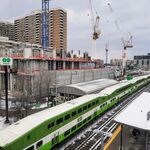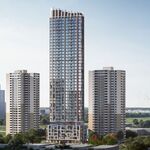kEiThZ
Superstar
I never agreed with Miller's plan to tear down the Gardiner. I agreed with bike lanes on Jarvis and other stuff. But tearing down the Gardiner to replace it with a "grand boulevard" smacked of a "war on car" move.
Yes, it's probably mostly 905ers that use it. Yes, it's expensive to maintain. But a functional road grid is necessary for any city.
I have always maintained that the Gardiner should be buried and tolled. It gives us the road capacity we need. It gets the users to pay for it. And 905ers are far more used to paying tolls (with the 407) than 416 residents.
And do this after GO is electrified.
Yes, it's probably mostly 905ers that use it. Yes, it's expensive to maintain. But a functional road grid is necessary for any city.
I have always maintained that the Gardiner should be buried and tolled. It gives us the road capacity we need. It gets the users to pay for it. And 905ers are far more used to paying tolls (with the 407) than 416 residents.
And do this after GO is electrified.




